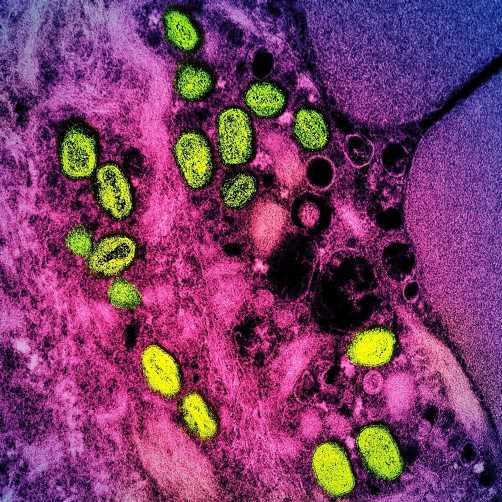A study conducted by scientists from the US Centers for Disease Control and Prevention (CDC) indicates that reducing one-time sexual partnerships among gay, bisexual, and other men who have sex with men can significantly reduce the transmission of the monkeypox virus. The research is published in the CDC's Morbidity and Mortality Weekly Report (MMWR).

Study: Modeling the Impact of Sexual Networks in the Transmission of Monkeypox virus Among Gay, Bisexual, and Other Men Who Have Sex With Men — United States, 2022. Image Credit: NIAID
Background
Global outbreaks of monkeypox infections in 2022 have indicated that sexual contact is the primary route of monkeypox transmission among men with multiple male sex partners.
Some recent survey reports have revealed that men who have sex with men (MSM) have adopted certain measures to protect themselves and their partners from monkeypox infection. The most common measure is reducing one-time sexual partnerships.
Various models of sexual infection transmission developed by the CDC have previously been used to study the spread of human immunodeficiency virus (HIV) and gonorrhea in the US. In the current study, these models were used to study the transmission dynamics of monkeypox infection among MSM.
Study design
The dynamic network models simulated by CDC represent sexual behaviors between MSM. In these models, men were predicted to have various types of sexual relationships, including primary, causal, or one-time partnerships.
According to the model simulations, men might have zero or one primary sexual partnership at a time that lasted on average 477 days, or zero, one, or two casual partnerships at a time that lasted for on average 166 days. In addition, men might have one-time partnerships that lasted for one day.
Between 2016 and 2019, CDC collected data from MSM, who reported the number, type, and duration of their current sexual partnerships. This data was used to develop six categories of sexual activity, which differ in their rate of one-time partnership formation.
Two conditions of monkeypox transmission were simulated wherein ten highly active cases were introduced to a population of 10,000 MSM. Both lower and higher transmission rates were considered by adjusting transmission probability per act. In the lower transmission condition, monkeypox was assumed to infect 15% of MSM. In the higher transmission condition, the virus was expected to infect 25% of MSM.
The reduction in the percentage of infected MSM was estimated at baseline (time of viral entry in the population) and under a condition wherein MSM reduced the frequency of one-time partnerships by 40% after 2.5 months of viral entry in the population. This condition was created based on the observations made in recent surveys.

Written by
Dr. Sanchari Sinha Dutta
Dr. Sanchari Sinha Dutta is a science communicator who believes in spreading the power of science in every corner of the world. She has a Bachelor of Science (B.Sc.) degree and a Master's of Science (M.Sc.) in biology and human physiology. Following her Master's degree, Sanchari went on to study a Ph.D. in human physiology. She has authored more than 10 original research articles, all of which have been published in world renowned international journals.
Source: Read Full Article
